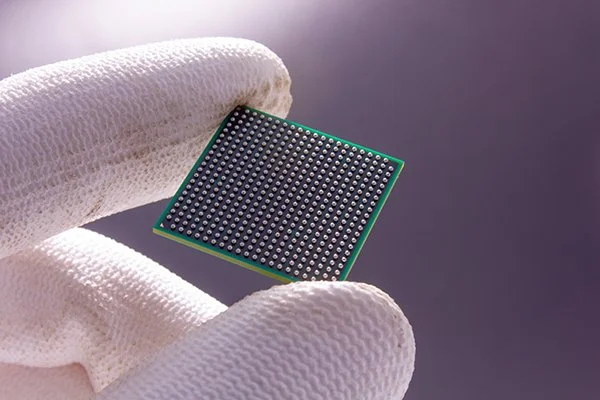Designing Rugged Embedded Systems for Harsh Environments: Key Considerations
Parthiv Pandya, Director of Product Management, VORAGO Technologies
July 25, 2025
In the most extreme operational settings—where high temperatures, intense radiation, and mechanical stress are the norm—embedded systems for harsh environments must be engineered with precision. Whether deployed in space, deep underground, or in high-altitude aerospace systems, these embedded solutions are critical for maintaining reliable control and communication. These rugged embedded systems are essential for ensuring resilience in demanding applications.
Designing these systems is not simply a matter of ruggedization; it requires a foundational approach to hardware and software selection, thermal management, and compliance with demanding industry standards. At VORAGO Technologies, we specialize in microcontroller solutions that meet these demands—particularly in high temperature embedded systems, space-grade embedded systems, and radiation hardened electronics. Meeting these standards not only prevents costly late-stage redesigns but also ensures system safety, reliability, and mission success.
Introduction to Embedded Systems for Harsh Environments
Embedded systems are integrated computing platforms that perform dedicated functions within a larger mechanical or electrical system. When these systems are deployed in harsh environments—such as space, military zones, nuclear facilities, or industrial operations—they must be designed to resist environmental stressors, including:
Extreme temperature fluctuations
Ionizing radiation
High vibration and mechanical shock
Electromagnetic interference (EMI)
Humidity and dust ingress
The increasing complexity of space missions and the push for more autonomous operation in defense and industrial systems have elevated demand for rugged embedded systems that can maintain reliable performance under such extreme conditions. These use cases often call for high temp microcontrollers, radiation hardened microcontrollers, and space-qualified components engineered from the ground up.
Key Design Considerations for Embedded Systems in Harsh Environments
When designing embedded systems for demanding conditions, engineers must consider multiple interdependent factors. These elements ensure operational continuity and component reliability across wide-ranging environments. Below are five key areas of focus.
1. Thermal Management & High Temperature Tolerance
High temperatures can degrade semiconductor performance, shift threshold voltages, and accelerate failure mechanisms. For embedded systems operating in engines, space vehicles, or arid industrial sites, managing heat is non-negotiable.
Designers often rely on:
Wide temperature range components (e.g., –55°C to +200°C)
Thermally stable substrates and encapsulants
Heat dissipation techniques such as heat sinks or PCB thermal vias
2. Radiation Hardening and Protection
In space, radiation poses one of the greatest risks to electronic reliability. Cosmic rays and solar particles can trigger:
Single Event Upsets (SEUs): Bit-flips in memory or logic circuits
Single Event Latch-up (SEL): High-current states leading to thermal damage
Total Ionizing Dose (TID): Gradual degradation of device performance
3. Reliability and Robustness in Extreme Conditions
Harsh environments often include dynamic mechanical stressors such as vibration, shock, and pressure changes. To meet these demands:
Components are encapsulated or coated with conformal layers
PCBs use rugged packaging standards
Devices are tested to MIL-STD-883, ECSS, or other mission-grade qualifications
Embedded systems used in aerospace or defense must pass strict reliability tests before flight or deployment, ensuring performance even in launch, re-entry, or high-impact scenarios.
4. Power Efficiency and Thermal Dissipation
Power efficiency is another key concern. Limited power budgets in satellites and remote systems make low power operation a priority. Efficient power use also helps limit internal heat generation, aiding thermal stability.
Low-power high temp microcontrollers support mission longevity while maintaining functional integrity under thermal duress. VORAGO’s microcontrollers are designed with energy optimization in mind, enabling longer service life without sacrificing performance.
5. Compliance and Qualification for Space and Industrial Use
Embedded systems destined for regulated environments must meet stringent certification requirements. Common standards include:
NASA EEE-INST-002
ESA ECSS-Q-ST-60-15C
MIL-STD-883/202
IPC-6012 for PCB reliability
Meeting these standards involves extensive documentation, traceability, radiation testing, and environmental qualification. Component selection should align with these specifications to avoid costly late-stage redesigns or failures.
VORAGO’s Embedded Microcontroller Solutions for Harsh Environments and Rugged Embedded Systems
VORAGO Technologies develops radiation hardened microcontrollers and high temperature embedded systems that are engineered to meet the rigorous demands of aerospace, defense, and industrial applications. At the core of these solutions is our patented HARDSIL® process—a silicon modification technique that enhances the radiation tolerance of standard CMOS devices. Unlike traditional radiation hardening methods that require costly and specialized manufacturing flows, HARDSIL® can be applied using conventional semiconductor processes. This makes it possible to produce radiation-tolerant microcontrollers that are both cost-effective and scalable across a wide range of applications.
The result is a portfolio of space-grade embedded systems that maintain performance in environments with high levels of ionizing radiation and temperature extremes, while remaining accessible for projects with limited size, weight, power, and budget constraints. Whether deployed in orbit, high-altitude flight, or subterranean exploration, these components offer system designers the ability to build rugged, reliable embedded platforms without compromising on efficiency or design flexibility.
Our product line includes:
VA41630: A high-performance Arm® Cortex®-M4 microcontroller designed for spaceflight and advanced control systems.
VA10800: A power-efficient, high temp Arm® Cortex®-M0 microcontroller supporting sustained operation in +200°C environments.
To learn more about how these technologies support reliable operation in extreme conditions, explore our overview on the best embedded microcontroller systems for space applications.
Case Studies & Applications
Embedded systems designed for harsh environments are deployed across a wide range of industries, each with its own set of operational challenges. From space to subsurface exploration, these systems must maintain reliable functionality despite exposure to temperature extremes, radiation, mechanical stress, and limited maintenance access.
LEO and GEO Satellite Payloads
Satellites in Low Earth Orbit (LEO) and Geostationary Orbit (GEO) must endure continuous exposure to ionizing radiation and severe thermal fluctuations. Embedded systems in these platforms manage functions such as communication, power regulation, and payload control. To perform reliably, these systems require radiation-hardened microcontrollers and low-power architectures that can withstand the cumulative effects of space radiation over time.High-Altitude Aerospace Systems
At high altitudes, electronic systems face challenges such as rapid thermal cycling, persistent vibration, and increased susceptibility to cosmic radiation. Embedded systems in aircraft and UAVs must therefore be ruggedized and thoroughly tested to ensure consistent operation across dynamic flight profiles and extended missions.Downhole Drilling and Subsurface Exploration
In oil, gas, and geothermal industries, downhole electronics are routinely exposed to temperatures exceeding +200°C, along with high pressures, corrosive materials, and mechanical shock. Embedded systems used in these applications require components specifically designed for high-temperature tolerance and long-term reliability, as they are often deployed in environments where physical access is limited or nonexistent.
These examples demonstrate how thoughtful design—centered on environmental resilience, system-level robustness, and proper component selection—is essential for embedded systems intended for harsh conditions. The success of such systems depends on balancing performance, power, and durability while meeting rigorous industry standards and mission requirements. For example, a rugged embedded system used in a lunar lander mission must survive both intense launch vibration and the vacuum of space while performing data processing without human intervention—failure could jeopardize the entire mission.
Conclusion
Designing embedded systems for harsh environments is a multidisciplinary challenge that demands a deep understanding of how environmental stressors affect electronic performance and longevity. These systems must be engineered to endure extreme temperatures, ionizing radiation, mechanical vibration, and power constraints—all while meeting strict reliability and qualification standards for their intended application. These rugged embedded systems are essential for ensuring resilience in demanding applications.
Key considerations include selecting components that are inherently tolerant to high temperatures and radiation, implementing robust mechanical design strategies, and ensuring compliance with industry standards such as NASA, ESA, or MIL-STD protocols. From thermal management and shielding techniques to fault-tolerant architectures and power efficiency, each design decision plays a critical role in ensuring the embedded system can perform its intended function reliably—whether in orbit, in flight, or underground.
As the demand for autonomous and remote systems continues to grow across industries like aerospace, defense, energy, and industrial automation, the importance of rugged embedded systems will only increase. These platforms not only extend operational reach but also improve safety and reduce maintenance requirements in inaccessible or mission-critical settings.
Engineers and system designers must stay informed about emerging technologies and proven design practices to ensure success in these challenging applications. By grounding development efforts in environmental resilience and lifecycle reliability, embedded systems can continue to serve as the backbone of innovation in even the harshest conditions.
Frequently Asked Questions (FAQs)
What makes high temperature embedded systems different from standard embedded systems?
High temperature embedded systems use components such as high temp microcontrollers that can operate in extreme temperature ranges—up to +200 °C—without degradation. They are engineered for durability, unlike standard systems which are optimized for commercial temperature ranges and less demanding environments.
Why are radiation hardened microcontrollers important for embedded systems used in space applications?
Space environments expose electronics to high-energy particles that can corrupt memory or damage circuits. Radiation hardened microcontrollers prevent these issues by mitigating effects like single-event upsets (SEUs) and total ionizing dose (TID) damage, ensuring continued operation and mission reliability.
How does VORAGO ensure its microcontrollers are suitable for harsh environments?
VORAGO leverages its patented HARDSIL® technology and strict qualification procedures to build space-grade embedded systems. These microcontrollers are rigorously tested for radiation tolerance, thermal resilience, and mechanical robustness, meeting the demands of harsh environments.
SUBSCRIBE TO OUR NEWSLETTER FOR THE LATEST UPDATES ON VORAGO TECHNOLOGIES PRODUCTS AND SERVICES.


